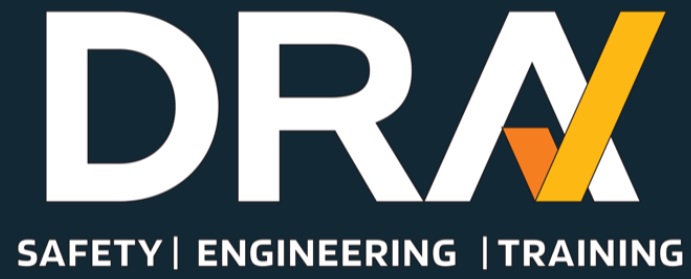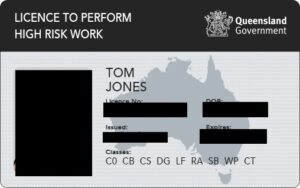 What is a ‘High Risk’ work licence?
What is a ‘High Risk’ work licence?
High Risk work is a critical aspect of many industries, and it is essential that workers have the necessary skills and knowledge to perform their duties safely. To ensure that workers are competent, Australia requires specific safety certificates or licenses for High-Risk work. These safety certificates, often referred to as high-risk work licenses or safety certificates, are mandatory for workers to undertake work in certain categories.
This is to discuss some of the different types of safety certificates required for High-Risk work in Australia and how they contribute to improving workplace safety. Specifically, we will explore the EWP ticket, forklift ticket, dogger (or ‘Dogman’ as it was previously called) ticket, scaffolding, and crane licenses. Safe Work Australia provides guidance on the types of work require a high-risk work licence under the model work health and safety laws, and direct you the process for obtaining a licence.
Though Safe Work Australia provides this guidance information it does not issue licences so you must contact your local WHS regulator as they will have the specific information about licensing in your state or territory. They will also have information on what to do if you lose your licence document or it gets stolen.
Elevating work Platform (EWP): The EWP ticket, or elevating work platform ticket, is a safety certificate required for individuals who operate elevated work platforms such as cherry pickers. These devices require specialised knowledge and skills to operate safely, and the EWP ticket ensures that operators have received the necessary training to operate them safely. However, it is important to note that the EWP ticket does not cover scissor lifts, which require a separate license. Employers must ensure that workers are competent in the specific type of plant they operate, as this is a legislative requirement for all plant.
Forklift: Similarly, the forklift ticket is a safety certificate that individuals must hold to operate forklifts in Australia. Forklifts are heavy machines that can pose significant risks to workers and others around them, particularly due to their rear-wheel steering design. The forklift ticket ensures that individuals have received the necessary training and skills to operate forklifts safely, reducing the risk of accidents and injuries in the workplace.
Dogger: The dogger (or dogman as it was previously known) ticket is a safety certificate required for individuals who work with cranes or other heavy lifting equipment. These workers are responsible for selecting the appropriate lifting slings and chains for simple lifts and directing the crane operator to ensure that loads are lifted and moved safely. There are three classes of safety certificates for rigging, starting with the dogger ticket and progressing to the basic and advanced rigger certificates. To obtain these certificates, individuals must demonstrate the necessary skills and knowledge to an accredited assessor.
Scaffolding: Scaffolding is another safety certificate required for individuals who work with all types of scaffolds available. Scaffolders are responsible for selecting the correct foundations for work to ensure the integrity of the scaffold during its life. They are also required to inspect, make alterations and repairs through the life of the scaffold. The level of knowledge and skill required increases with the complexity of the scaffold build, from the simple 4m high systems to the birdcage designs used in specialist applications.
Crane: Finally, crane licenses are required for individuals who operate a range of specialist cranes, including vehicle loading cranes, slewing cranes, and non-slewing cranes with lifting capacities exceeding 100T. Each type of crane has different levels of complexity and safety needs, and operators must be highly skilled to operate them safely. Crane operators often work with doggers and riggers to calculate and set lifts.
Is training or ‘Competency to Operate’ required to with a High Risk work licence?
The WHS Legislation in Australia is specific when referring to high risk work licences requiring employers to sight the licences before commencing work. Additionally, as each type of high risk work the associated plant can be distinctly different there is a requirement to ensure that the worker can competently use the specific item of plant. For example, the Forklift license covers all forklifts from the small 1.5 tonne to the larger shipping container forklifts still in use. Different model Cranes can have controls in different positions with alarms and gauges moved to alternative positions.
Each of these safety certificates play a vital role in improving workplace safety in Australia. Employers must ensure that their workers have the necessary safety certifications to reduce the risk of accidents or injuries and ensure that their employees can perform their work safely. Failure to do so can result in legal consequences, as well as putting workers at risk. It is, therefore, imperative that workers who perform high risk work in industries obtain the relevant safety certificates and that employers ensure their employees maintain their competency.
For more information on services we provide check out our Training Events page for upcoming training events being completed inhouse. Alternatively, one of our experienced safety consultants can go to your organisation and deliver the training.
We offer a range of health and safety courses, safety training and WHS consultancy services.
Contact us today for an obligation free quote on any of our services.


 What is a ‘High Risk’ work licence?
What is a ‘High Risk’ work licence?